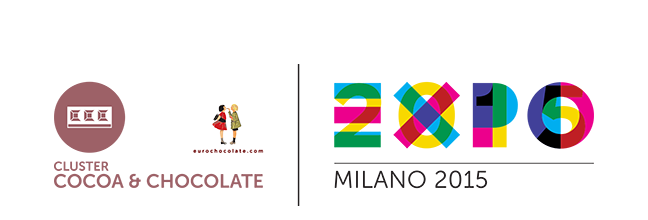Il Cibo degli Dèi
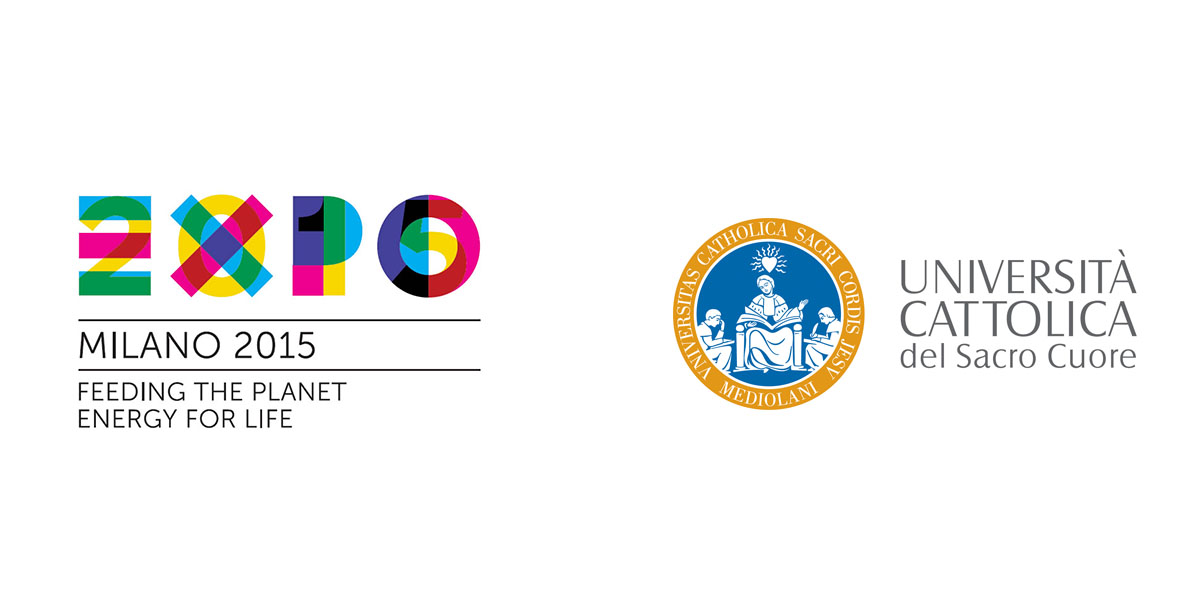
“Cibo degli dei”.
Le origini americane del cacao
Gustando un delizioso cioccolatino o bevendo una squisita cioccolata, quasi nessuno oggi pensa al vertiginoso viaggio nel tempo – circa 4.000 anni! – compiuto da questo ricercato genere voluttuario. Eppure il cacao, la materia prima del cioccolato, era già conosciuto, coltivato e lavorato dai popoli mesoamericani molti secoli prima dell’Era Cristiana. Oggi sembra quasi sicuro che gli Olmechi (1.500-400 a.C.), stabiliti sulle pianure costiere del Golfo del Messico furono tra i primi popoli a coltivare il cacao. Ma le origini dell’utilizzo umano di questa pianta sono forse più antiche: l’immagine più arcaica viene dal Perù ed è riportata su un vaso di 2.500 anni fa decorato con elementi a forma di bacche di cacao. Per migliaia di anni il cacao, sensibile alle condizioni ambientali, è stato prodotto e consumato nell’America Centrale, in una vasta area tra il Messico centrale a nord, e Guatemala, Belize, El Salvador e Honduras occidentale, popolata da genti storicamente e socialmente stratificate, tra le quali gli Olmechi, i Maya (1000 a.C.-900 d.C.), i Toltechi (900-1.100 d.C.), i Mexica (o Aztechi, XII-XVI secolo). Per molte culture dell’America precolombiana i semi di cacao e i commestibili prodotti con essi svolsero un ruolo centrale tanto nelle credenze e nei rituali religiosi quanto negli assetti sociali ed economici.
Il cacao era legato a una complessa simbologia religiosa. Cacao e mais rappresentavano una coppia fondamentale nella cosmologia mesoamericana, entrambi preparati nelle bevande rituali con l’acqua sacra per alimentare gli dei e gli antenati e ottenerne la fertilità dei campi. Ed è attestata l’usanza di provvedere i morti di cacao per propiziare il viaggio agli inferi. Il cacao era anche associato al sangue e ai sacrifici cruenti agli dei di animali e prigionieri di guerra. Possedere cacao era un segno di ricchezza e di potere politico. Spumeggianti bevande al cacao sono spesso rappresentate sul vasellame maya e mexica alla base del trono dei re. Semi e fave di cacao, associati alle tombe dei potenti e offerte alle divinità, erano inoltre usati come una moneta negli scambi interni e internazionali. Cacao era il dono usuale per cementare alleanze tra leaders politici o ricompensare élites leali. I preziosi semi, tostati, macinati, mescolati ad acqua e aromatizzati con spezie, chili e altro, si trasformavano in una bevanda amara e piccante, rinfrescante, energetica, stimolante, detta prima cacahualt, probabilmente in onore del dio piumato tolteco-azteco Quetzalcòatl, e poi xocolatl che significa “acqua amara”. Questa bevanda, almeno nella cultura mexica, fu riservata ai ceti dominanti: il sovrano, la famiglia reale, i grandi guerrieri, i più ricchi mercanti. A ragione il naturalista svedese Linneo nel 1734 avrebbe denominato la pianta Theobroma (“cibo degli dei”).
“Food of the Gods”.
The American origins of Cocoa
When we taste a fine chocolate bar or drink a cup of delicious hot chocolate, few of us think of the vertiginous journey of nearly 4,000 years that this ancient luxury item has taken. And yet cocoa, the raw material of chocolate, was already known, cultivated and processed by Mesoamerican peoples many centuries before the Christian Era. Today we are almost sure that the Olmecs (1500-400 BC), who settled the coastal plain of the Gulf of Mexico, were one of the first cultures to grow cocoa. But perhaps the origins of human use of the plant are even older: the earliest image comes from Peru, a 2500-year-old vase decorated with elements in the shape of cocoa pods. For thousands of years the cocoa plant, sensitive to environmental conditions, was grown and consumed in Central America, in a vast area from Central Mexico to Guatemala, Belize, El Salvador and Western Honduras, inhabited by historically and socially stratified peoples, including the Olmecs, the Maya (1000 BC-900 AD), the Toltecs (900-1100 AD) and the Mexica (or Aztecs, 12th-16th centuries). For many pre-Columbian American cultures, the seeds and edible products of the plant performed a central role in many belief systems and religious rites as well as in social and economic affairs.
Cocoa was linked to a complex religious symbology. Cocoa and maize represented a fundamental pairing in Mesoamerican cosmology, both of them prepared with holy water in ritual drinks as food for the gods and the ancestors and to plead for fertility of the land. And we have evidence of its being buried with the dead to ease their journey to the underworld. Cocoa was also associated with blood and with the sacrifice of animals and prisoners of war. To possess cocoa was a sign of wealth and political power. Frothy drinks of cocoa are often represented on Maya and Mexica vessels at the base of the thrones of kings. Cocoa seeds and pods, associated with the tombs of the powerful and offerings to the gods, were also used as currency in domestic and international trade. Cocoa was the customary gift to cement alliances between political leaders or to repay loyal elites. The precious seeds, roasted, ground, mixed with water and flavoured with spices, chilli and other ingredients, made a bitter spicy drink, refreshing and stimulating, known to begin with as cacahualt, probably in honour of the plumed Toltec-Aztec god Quetzalcòatl, and later as xocolatl, meaning “bitter water”. This drink, at least in Mexica culture, was reserved for the ruling classes: the sovereign, the royal family, leading warriors and the wealthier merchants. Which explains why the Swedish naturalist Linnaeus in 1734 called the plant Theobroma (“food of the gods”).
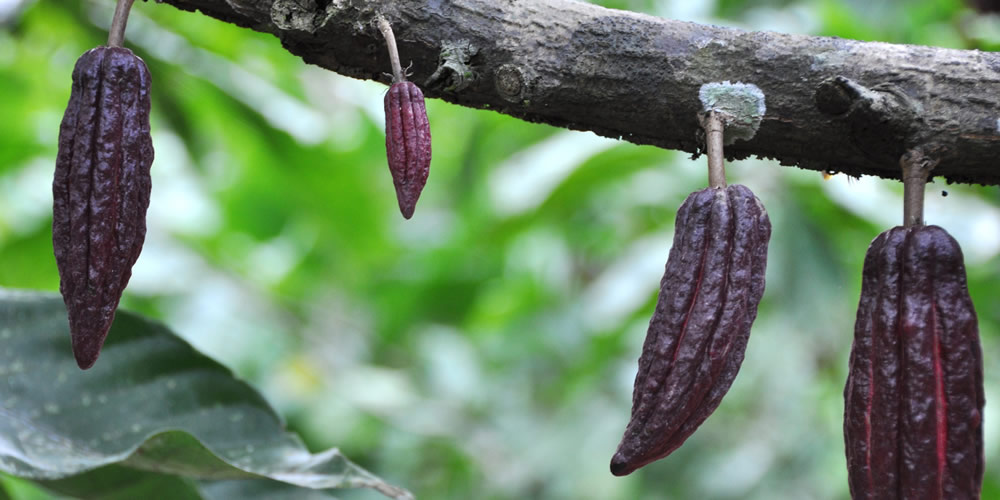
L’impatto coloniale europeo e l’“oro bruno”
(Spagnoli e Amerindi, XVI sec.)
Nel 1519, all’arrivo degli spagnoli, l’imperatore Montezuma II credette di vedere nel comandante Hernàn Cortès l’immagine del dio serpente piumato Quetzalcòatl che, secondo la leggenda, sarebbe dovuto ritornare sulla terra, e lo accolse con onori divini, donandogli una piantagione di cacao. Il conquistador, intuendone il valore economico, definì il cacao “oro bruno”. Le comunità conquistate furono obbligate a fornire lavoro ed enormi tributi in natura (cacao compreso) ai nuovi dominatori. L’italiano Girolamo Benzoni, botanico viaggiatore in America tra il 1541 e il 1555, descrisse in modo dettagliato il procedimento per la preparazione della bevanda che, tuttavia, gli sembrava “beveraggio più da porci che da huomini”. Per renderla appetibile al loro palato i coloni spagnoli del Messico vi aggiunsero zucchero bianco, cannella, anice, chiodi di garofano, mandorle e aromi vari. Bernal Díaz del Castillo, testimone oculare di un banchetto offerto dall’imperatore Motecuhzoma II, alluse alla credenza, divenuta poi popolare anche in Europa, della virtù afrodisiaca della bevanda: “Gli portarono alcune coppe d’oro fine, con un certa bevanda fatta di cacao, che dicono fosse per il successo con una donna”.
Anche i religiosi (agostiniani, francescani, domenicani, gesuiti) ricevevano ingenti tributi in natura dagli amerindi da poco cristianizzati. Nelle chiese locali si affermarono forme di sincretismo religioso e il cacao, un tempo cibo degli dei maya, continuò a occupare una sua posizione nelle cerimonie festive e nella devozione popolare. In determinate comunità mesoamericane offerte di cibo, incenso, fiori e fave di cacao erano collocate presso gli altari davanti alle immagini dei santi, equiparati agli antichi idoli. Una testimonianza di quest’uso perdurante è il “Cristo del Cacao” nella cattedrale di Mexico City, ai piedi del quale venivano deposte come offerte le fave di cacao. Lo scambio coloniale avviò, in effetti, un processo di ‘transculturazione’ da cui in America Latina nacque una nuova cultura meticcio-creola. Mais, chili, cioccolato furono integrati nella cucina coloniale messicana e infine diffusi dalla Spagna al resto d’Europa. Questi alimenti furono anche assorbiti nella cultura religiosa cristiana. Nei monasteri e nei conventi la preparazione della cioccolata divenne un’arte raffinata. La bevanda fu molto apprezzata dai religiosi che la utilizzavano anche per mitigare i frequenti digiuni canonici. Non tutti però videro di buon occhio questo nuovo costume. Giuristi e teologi intransigenti si opponevano a qualsiasi forma di lenimento del digiuno, il cui fine era la mortificazione della carne e l’ascesi spirituale.
Nella cioccolata vedevano infatti una sorta di pasto liquido nutriente che, oltretutto, eccitava la sensualità. Sebbene la polemica cattolica sul digiuno si prolungasse nei secoli, autorevoli interventi stabilirono che bere cioccolata era lecito, come quello di papa Pio V (1569) o del cardinale Francesco Maria Brancaccio il quale nel 1664 ribadì il principio che “liquidum non frangit jejunum” (una bevanda non rompe il digiuno).
European colonial influence and “brown gold”
(Spanish and Native Americans, 16th century)
When the Spanish arrived in 1519, emperor Motecuhzoma II believed he saw in captain Hernàn Cortès the image of the plumed serpent god Quetzalcòatl, who, according to legend was about to return to Earth, and welcomed him with honoursand a gift of a cocoa plantation. The conquistador, who guessed the economic value, dubbed cocoa “brown gold”. The conquered communities were obliged to provide labour and huge tributes in kind (including cocoa) to the new rulers. The Italian Girolamo Benzoni, a botanist travelling in America between 1541 and 1555, described in detail the preparation of the drink which, however, he thought “a beverage fit more for pigs than men.” To make it more palatable to them, the Spanish settlers in Mexico added white sugar, cinnamon, aniseed, cloves, almonds and spices. Bernal Díaz del Castillo, eye witness to a banquet offered by the emperor Motecuhzoma II, alluded to the belief, later to become widespread in Europe, in the aphrodisiacal properties of the drink: “They brought him several cups of fine gold, with a drink made of cocoa, which they said would bring success with women.”
Missionaries (Augustinians, Franciscans, Dominicans, Jesuits) received huge tributes in kind from the recently converted natives. In the local churches forms of religious syncretism took hold and cocoa, once the food of the Mayan gods, continued to play a part in festive ceremonies and popular worship. In certain Mesoamerican communities, offerings of food, incense, flowers and cocoa beans were placed on the altar before images of the saints, equated with the ancient idols. Testimony of this persisting custom is the Señor del cocoa in Mexico City cathedral, where cocoa beans are placed at Christ’s feet. Colonial trade in effect began a process of ‘transculturation’ which gave rise in Latin America to a new Mestizo-Creole culture. Maize, chilli and chocolate were integrated into colonial Mexican cuisine and eventually spread from Spain to the rest of Europe. These foods were also absorbed into Christian religious culture. In monasteries and convents the preparation of chocolate became a sophisticated art. The drink was highly prized by the clergy who even used it to mitigate the frequent canonical fasts. But not everyone looked kindly on this new custom. Jurists and intransigent theologians opposed any easing of the fast, whose purpose was the mortification of the flesh and spiritual uplift.
They saw chocolate as a nutritious liquid meal which – even worse – was said to arouse the senses. While the Catholic polemic on fasting lasted for centuries, authoritative pronouncements established that drinking chocolate was permitted, such as that by Pope Pius V (1569) or Cardinal Francesco Maria Brancaccio, who in 1664 reasserted the principle that “liquidum non frangit jejunum” (one drink does not break the fast).
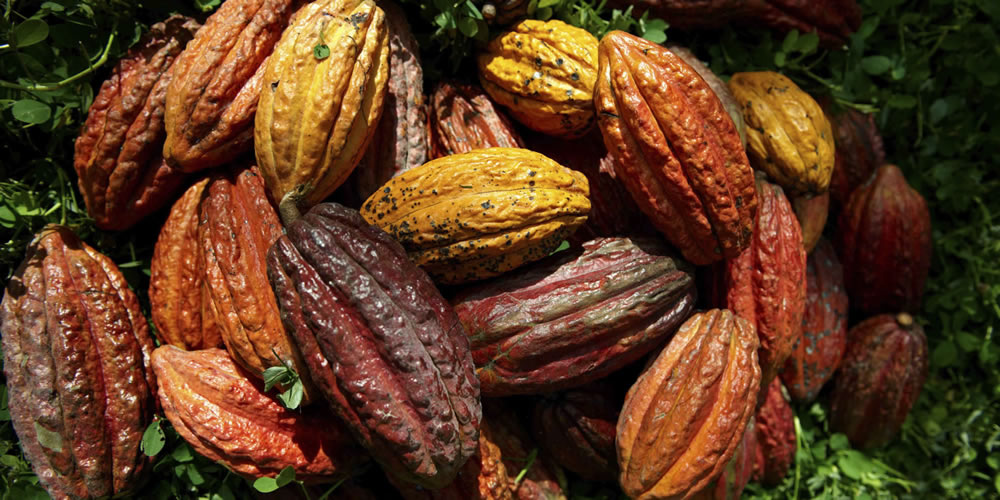
L’Europa scopre il cioccolato
(secoli XVII-XVIII)
Al principio del XVII secolo dagli ambienti ecclesiastici cattolici, dalla Corte di Madrid e dalle case aristocratiche e altoborghesi spagnole il consumo di cioccolata si trasmise ad altri Paesi europei: Franca Contea, Paesi Bassi, Milano, Napoli, Torino, Firenze. In Francia la cioccolata, introdotta verso il 1615, lentamente conquistò l’aristocrazia. Il cardinale Alphonse de Richelieu (fratello del celebre ministro) ne divenne un fervente estimatore, ma forse più come rimedio medico “per moderare i vapori della milza”. A Parigi nel 1671 aprì al pubblico il primo negozio di «chocolat à boire». In Inghilterra le Chocolate Houses si diffusero facendo concorrenza alle Coffee Houses. Naturalmente la Spagna cercò di mantenere il monopolio del commercio e della vendita del cacao, ma il contrabbando e la pirateria, alimentati dalla forte concorrenza olandese, dirottarono larga parte del cacao americano verso il centro di Amsterdam, ove risiedevano ormai gli ebrei della diaspora iberica, esperti maestri cioccolatieri.
Nel XVIII secolo in Europa la cioccolata, detta anche “brodo indiano”, fu una moda aristocratica, imitata dalla borghesia urbana. La si gustava di solito come prima colazione, al tavolino o, preferibilmente, a letto in négligé, o nel boudoir, ambienti che rinviano, secondo una variopinta tradizione iconografica, all’erotismo, ma anche all’attività intellettuale, all’otium creativo. Alla fine del secolo cominciarono i primi esperimenti di meccanizzazione produttiva. Nel 1778 si sperimentò in Francia la prima macchina idraulica per facilitare il frullaggio dell’impasto di cacao. Nel 1795 una macchina a vapore fu utilizzata dalla ditta Joseph Fry & Sons a Bristol.
Europe discovers chocolate
(17th-18th centuries)
At the start of the 17th century, the drinking of chocolate spread from the Catholic ecclesiastical milieu, the Court of Madrid and the houses of the Spanish aristocracy and upper classes to other European countries: Franche Comté, the Netherlands, Milan, Naples, Turin and Florence. In France chocolate was introduced in 1615 and gradually won over the aristocracy. Cardinal Alphonse de Richelieu (brother of the famous statesman) became a fervent supporter, though perhaps more as a medical remedy “to moderate the vapours of the spleen”. In Paris the first shop serving “chocolat à boire” opened in 1671. In England Chocolate Houses spread, competing with Coffee Houses. Naturally Spain tried to keep hold of the monopoly in the trade and sale of cocoa, but piracy and smuggling, as well as strong competition from the Dutch, diverted much American supply to the centre of Amsterdam, which had then become home to Jews from the Iberian diaspora who were expert chocolate makers.
In the 18th century Europe chocolate, also known as “Indian brew”, became an aristocratic fashion, imitated by the urban bourgeoisie. It was usually drunk at breakfast, at the table or, preferably, lounging in bed in a negligee or in the boudoir, environments which, according to the rich iconographic tradition, hinted at eroticism, but also at intellectual activity and creative contemplation.
At the end of century the first experiments with mechanized production began. The first hydraulic machine for beating cocoa paste appeared in France in 1778. In 1795 a steam-powered machine was used by Joseph Fry & Sons in Bristol.
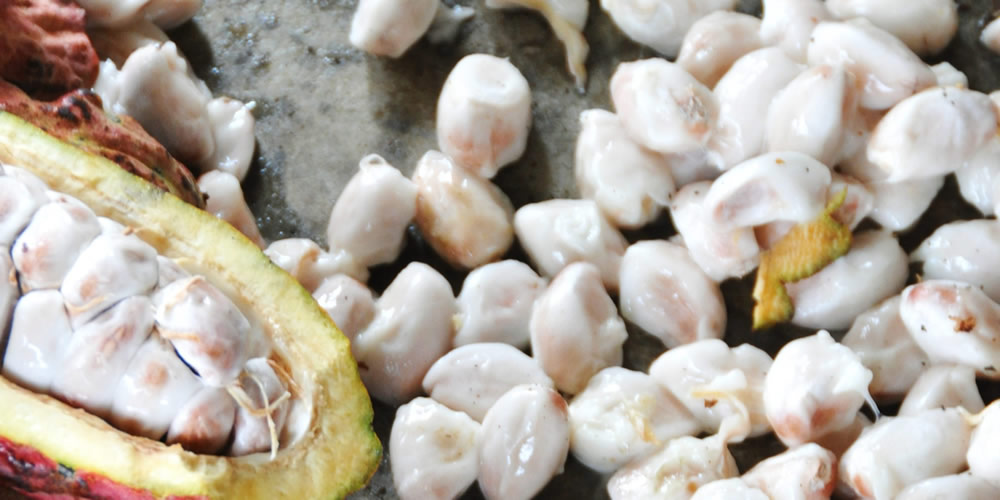
Dal cioccolato per pochi al cioccolato per tutti (Processi industriali e mutamento degli stili di vita, secoli XIX-XX)
Nella prima metà del XIX secolo il settore fu interessato da una progressiva espansione, sebbene in proporzioni inferiori a quelli del tè e del caffè. La Francia fu il primo Paese a conoscere uno sviluppo industriale di tipo moderno. Un gruppo cospicuo di aziende (Lombard, Menier, Pelletier, Poncelet, Devink, Masson, Méliand) sperimentò una generalizzata meccanizzazione, con macchine pulitrici-rompitrici, macinatrici e impastatrici, e tostatori a tamburo. Una svolta decisiva avvenne nel 1828, quando l’olandese Casparus J. Van Houten mise a punto un metodo innovativo per estrarre il burro di cacao, dimezzando così il contenuto di grasso del cacao e ottenendo al tempo stesso un prodotto sostanzialmente nuovo, il cacao in polvere, molto più solubile, leggero e digeribile rispetto alla pasta tradizionale. Grazie al burro di cacao fu creato un prodotto anch’esso nuovo, il cioccolato solido. Già pronto per l’uso alimentare in qualunque situazione, esso innescò una piccola rivoluzione del consumo, dal 1849, quando la ditta inglese Fry & Sons lanciò le tavolette da mangiare. La comparsa del burro di cacao fu il principale presupposto del cioccolato fondente, inventato dallo svizzero Rudolf Lindt, verso il 1879. Un altro svizzero, Daniel Peter, fabbricò per primo il cioccolato al latte (1879), utilizzando il nuovo latte in polvere inventato nel 1867 dallo svizzero Henri Nestlé. La Confederazione Elvetica divenne da allora «il Paese del cioccolato», principale esportatore di cioccolato solido, mentre l’Olanda si specializzò nell’export di cacao in polvere. Consumi di élite e consumi popolari si incrociarono, per la prima volta nella storia moderna del cacao. La scienza intanto era riuscita a chiarire tanto gli aspetti merceologici quanto quelli dietetico-nutritivi del cacao, individuandone l’apporto significativo di carboidrati e grassi alla dieta umana.
Lo sviluppo industriale favorì l’aumento dei redditi individuali e il relativo abbassamento del prezzo unitario del cacao. L’ampliarsi dei consumi e l’affermarsi di nuovi stili di vita determinarono un’imponente crescita del settore. La tradizionale offerta latino-americana alla fine del XIX secolo non fu più in grado di soddisfare la domanda in forte espansione. Grandi investimenti capitalistici occidentali si indirizzarono allora verso altri Paesi del continente americano (Trinidad e Tobago, Giamaica, Cuba, Haiti, Repubblica Dominicana) e del continente africano, quali Togo, Cameroon e, in particolare, l’isola di São Tomé, possedimento portoghese. Nel primo decennio del XX secolo São Tomé si affermò come il secondo produttore mondiale di cacao (22.100 tonnellate), dopo l’Ecuador (24.700 t). A quella stessa epoca, sul versante terminale della catena produttiva, Stati Uniti d’America e Germania divennero, per volume complessivo di materia prima lavorata, i due maggiori produttori mondiali. Tedeschi, statunitensi, francesi, britannici erano allora i principali consumatori di cacao pro capite. L’avvento della moderna industria dolciaria ebbe uno sviluppo esemplare nella grande impresa americana di Milton S. Hershey (1857-1945), il quale inserì le innovazioni tecnologiche europee in un sistema produttivo di massa, con enormi ricadute sul lavoro, sui costumi alimentari e sulla società, paragonabili a quelle portate dall’organizzazione industriale automobilistica di Ford.
Tra l’Ottocento e il Novecento avvenne dunque un fondamentale passaggio ‘culturale’ nelle abitudini alimentari occidentali, con l’avvento di tre prodotti diversi: cacao in polvere, cioccolato fondente, cioccolato al latte. Da articolo esotico ricercato e consumato da pochi privilegiati, l’antico “cibo degli dei” divenne prodotto della moderna industria dolciaria, utilizzato ormai da moltitudini di persone e particolarmente indicato dalla scienza medico-alimentare per categorie socio-anagrafiche quali bambini, anziani, sportivi ed escursionisti, militari. La comunicazione pubblicitaria ne sollecitava inoltre il consumo in determinate situazioni sociali, quali il tempo libero, le festività, i regali. Nella seconda metà del XX secolo il cioccolato assunse anche quella funzione di snack, legata ai ritmi e agli stili di vita urbani, entrando a pieno titolo tra i consumi di massa del mondo (non solo occidentale): dallo studente squattrinato all’astronauta in volo nello spazio.
From a luxury good for the few to a snack for everyone (industrialization and changing lifestyles, 19th-20th centuries)
In the first half of the 19th century the chocolate industry continued to expand, albeit more slowly than that for tea and coffee. France was the first country to see modern industrial development. A sizable group of companies (Lombard, Menier, Pelletier, Poncelet, Devink, Masson, Méliand) experimented with mechanization, with cleaning/breaking machines, grinders and mixers, and drum roasting. A decisive turning point came in 1828, when the Dutchman Casparus J. Van Houten developed a new method for extracting cocoa butter, with half the fat content of the beans and at the same time obtaining a substantially new product, cocoa powder, much more soluble, lightweight and digestible than traditional paste. With cocoa butter a totally new product was invented, solid chocolate. Ready to eat in any situation, it triggered a minor revolution in consumption habits, from 1849, when the British firm Fry & Sons introduced the first chocolate bars. The appearance of cocoa butter was the key prerequisite of dark chocolate, invented by the Swiss Rudolf Lindt, around 1879. Another Swiss, Daniel Peter, produced the first milk chocolate (1879), using the new milk powder invented in 1867 by the Swiss Henri Nestlé. Henceforth the Helvetic Confederation became the home of chocolate, the main exporter of solid chocolate, while the Netherlands specialized in exporting cocoa powder. Thus the eating habits of the elite and the masses met for the first time in the modern history of chocolate.
Meanwhile science had begun to clarify the commodity-related and nutritional aspects of cocoa, identifying the significant contribution of carbohydrates and fats to the human diet.
Industrialization raised personal incomes and the relative price of cocoa fell. With broader consumption and new lifestyles the industry grew dramatically. By the end of the 19th century the traditional Latin American supply was no longer able to keep pace with the huge expansion in demand. Western capitalist investors turned to other parts of the Americas (Trinidad and Tobago, Jamaica, Cuba, Haiti, Dominican Republic) and countries in Africa, like Togo, Cameroon and, in particular, the Portuguese island of São Tomé. In the first decade of the 20th century, São Tomé became the world’s second producer of cocoa (22,100 tons) after Ecuador (24,700 tons). Around the same period, at the end of the production chain, the United States and Germany became the two biggest producers by total volume of raw material transformed. Germans, Americans, French and British were the main per capita consumers of cocoa at that time. The modern confectionary industry saw its most exemplary development with the large U.S. company of Milton S. Hershey (1857-1945), who introduced European technological innovations to mass production, with huge repercussions for labour, eating habits and society, comparable to Ford’s assembly line.
Between the 19th and the 20th century, therefore, a fundamental cultural shift took place in Western food habits, with the appearance of three separate products: cocoa powder, dark chocolate and milk chocolate. From an exotic item sought after by the privileged few, the ancient food of the gods, chocolate became the product of the modern confectionary industry, eaten by millions of people and specially recommended by medical science for certain groups such as children, the elderly, sports people and adventurers, as well as soldiers. Advertising stoked consumption further for specific social situations, leisure, parties and for gifts. In the second half of the 20th century chocolate also became a snack, associated with the pace of urban lifestyle, taking its rightful place among the items of mass consumption across the world (and not only in the West): from the penniless student to the astronaut in space.
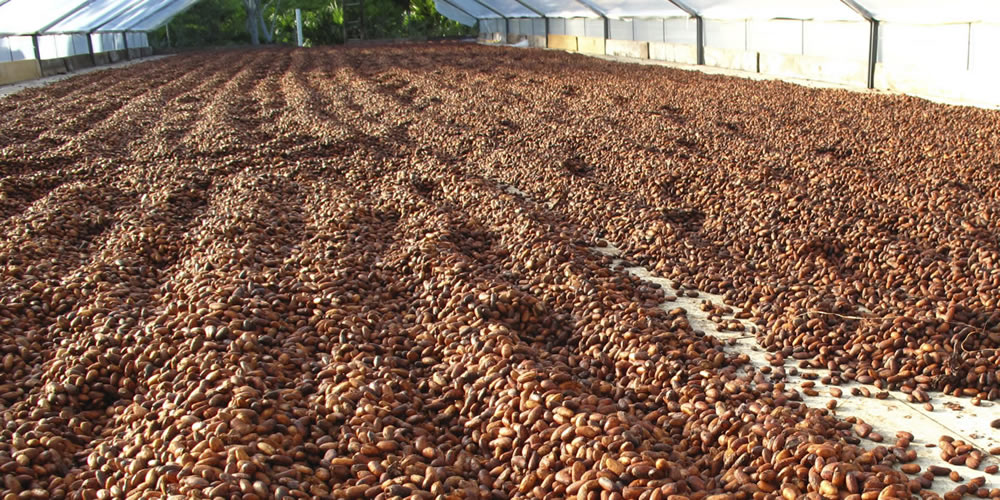
Credits Prof. Emanuele Pagano, Università Cattolica del Sacro Cuore – Laboratorio UCSC ExpoLAB




